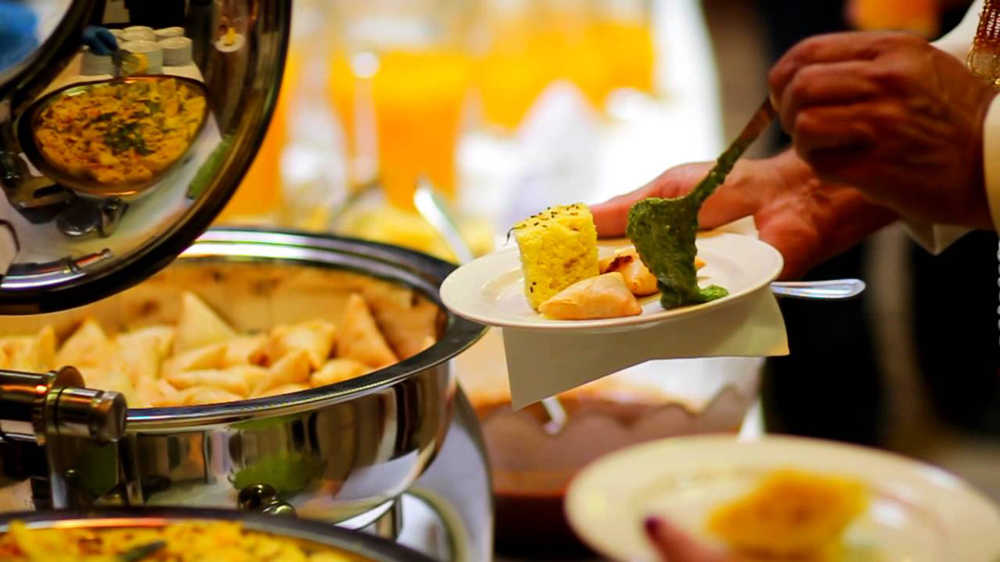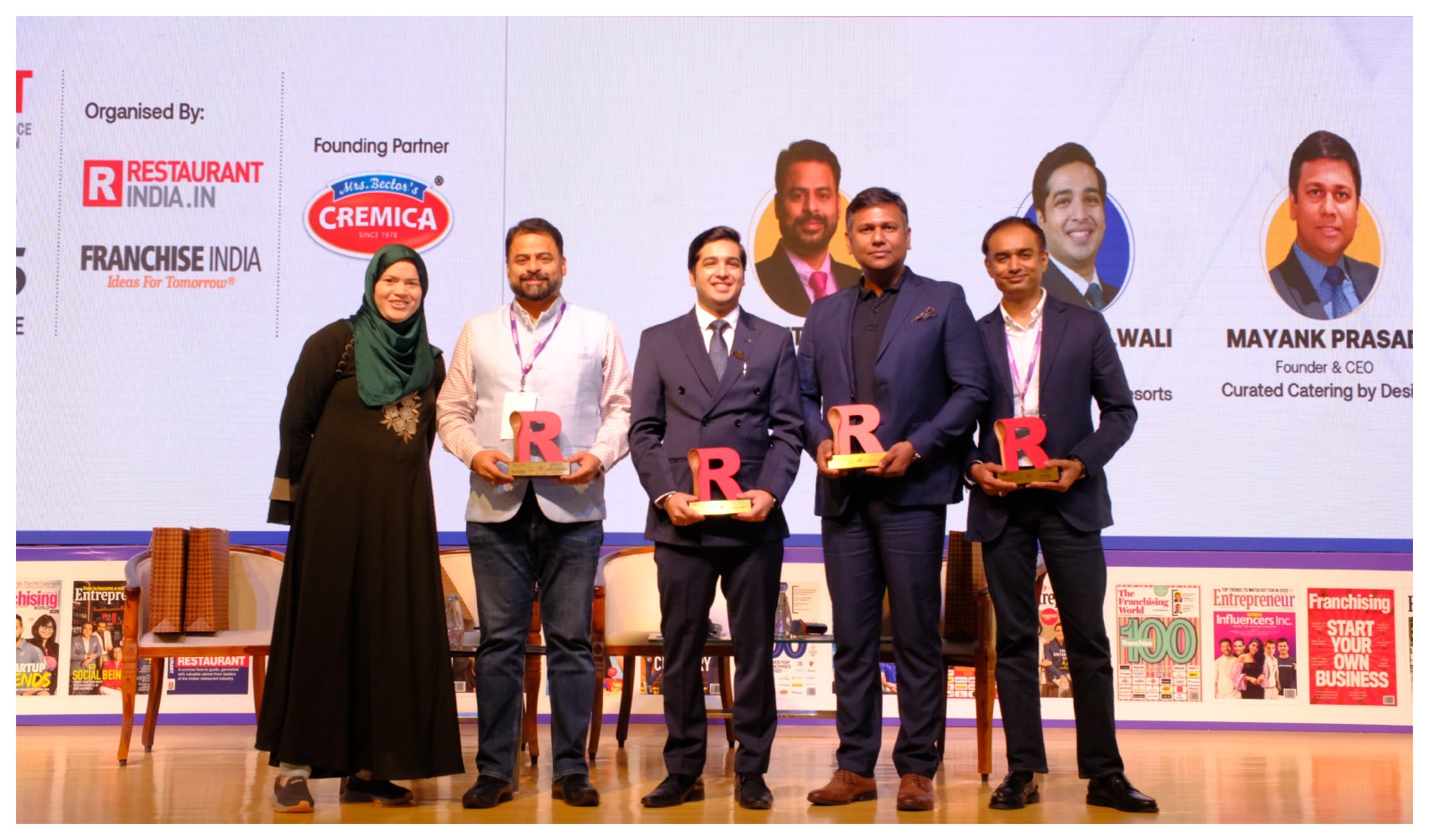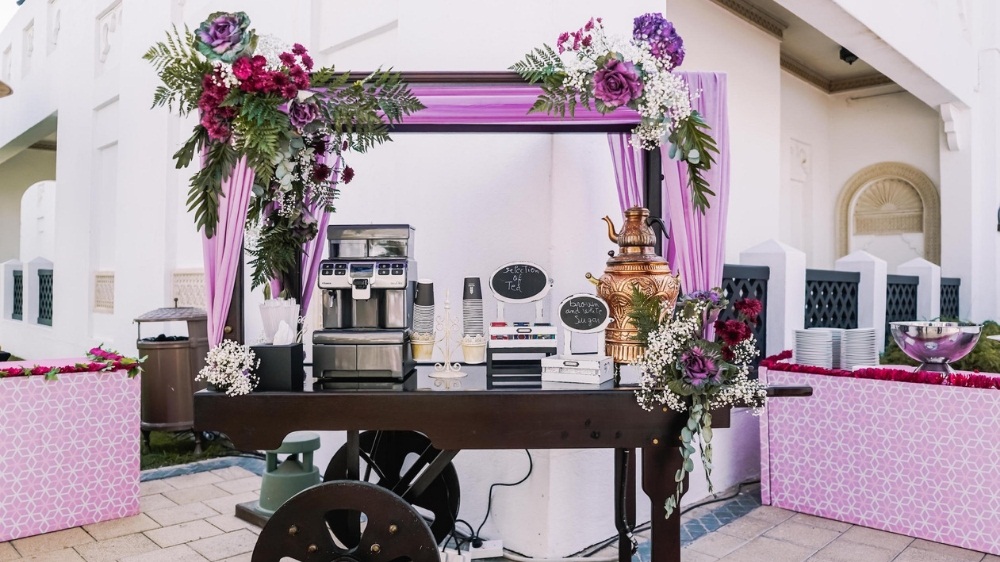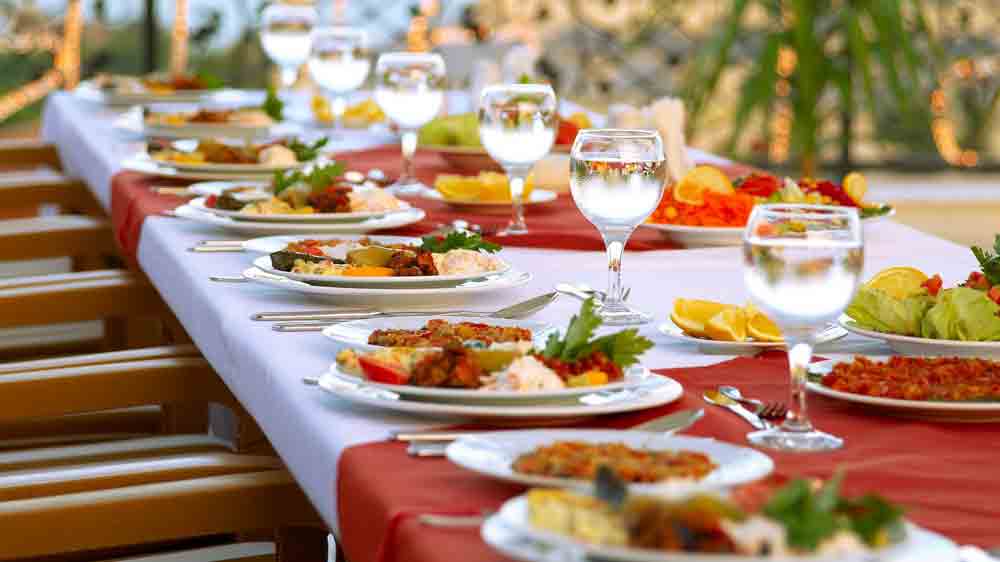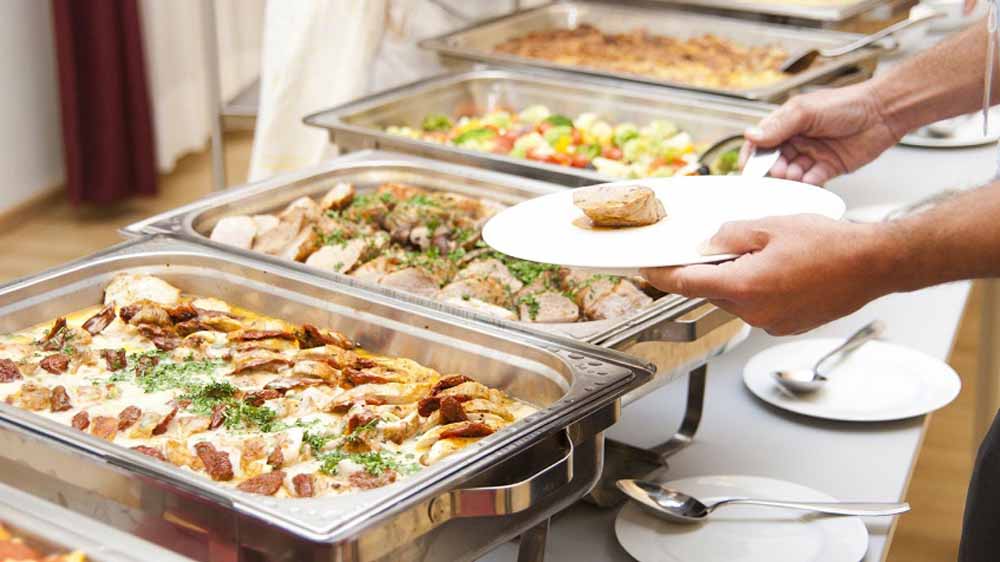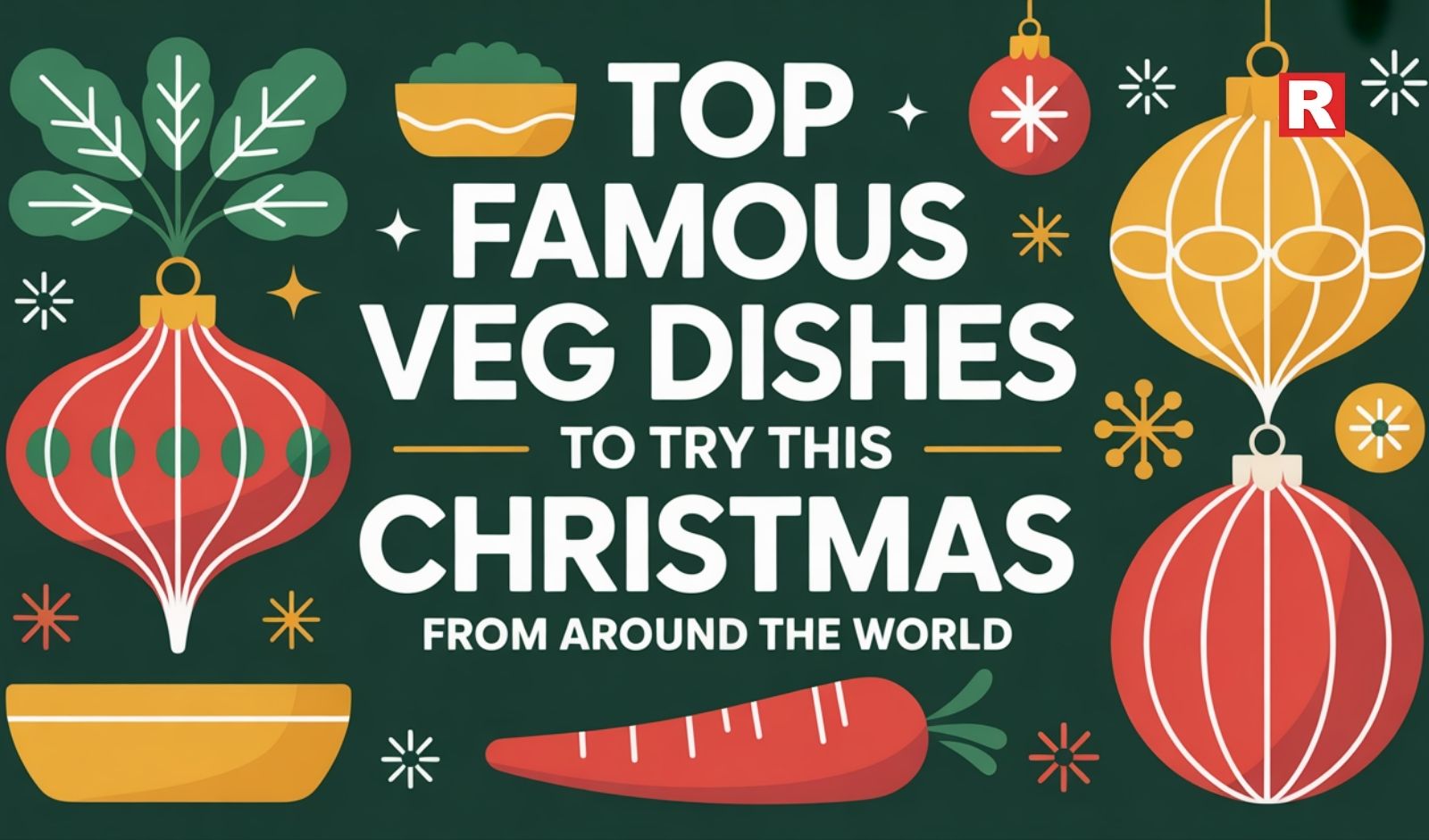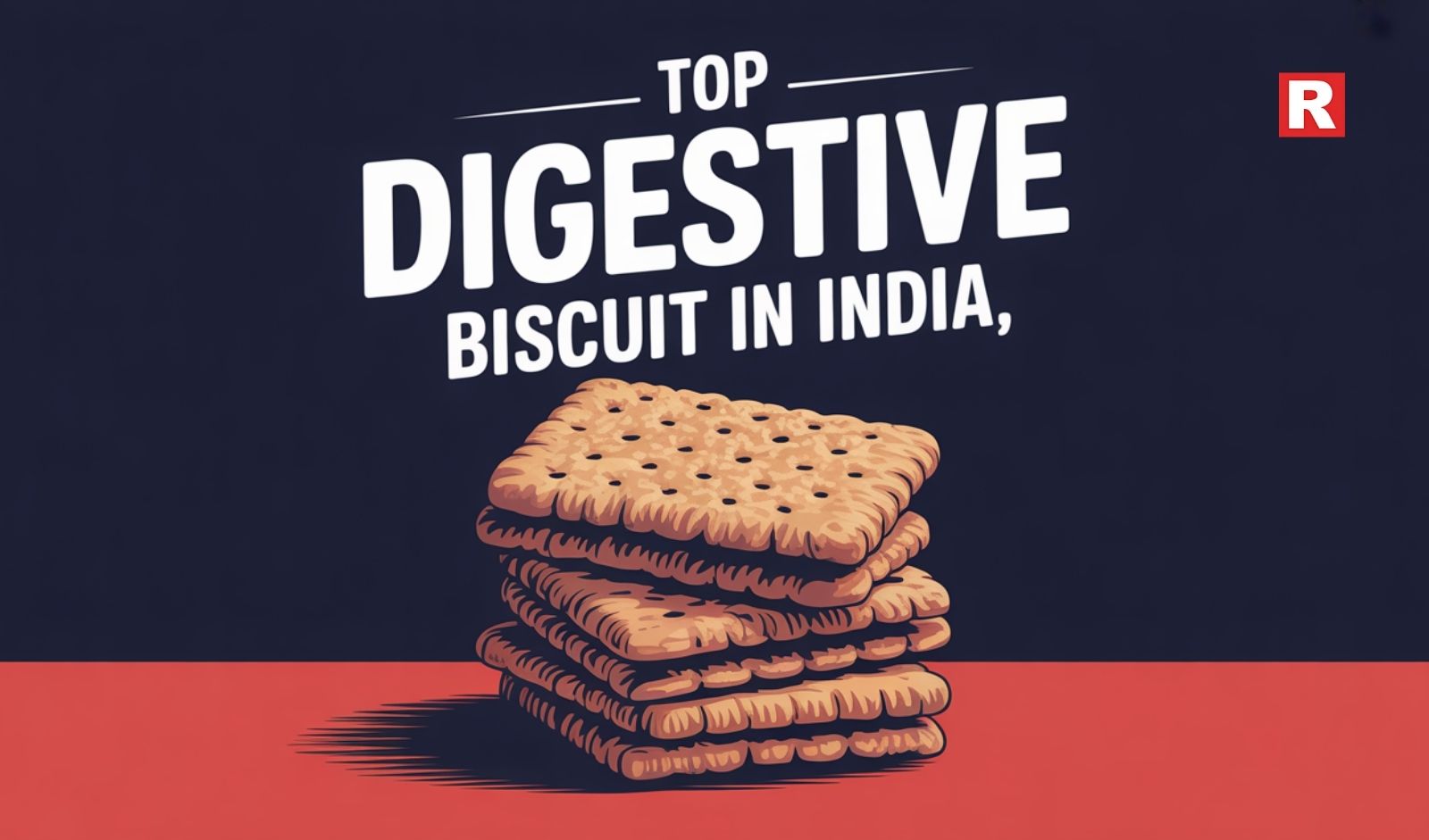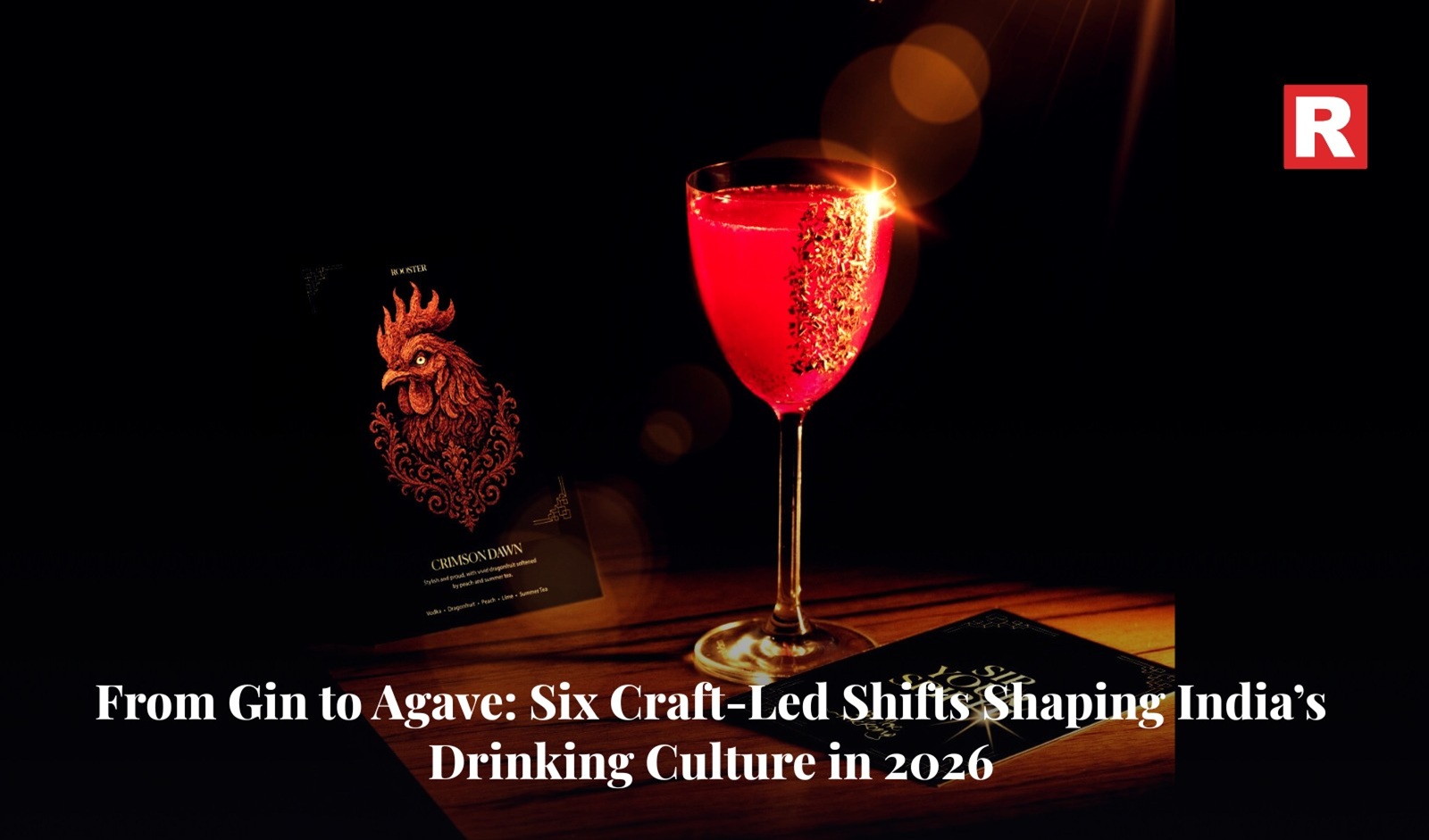
Almost 98 per cent of the unorganised catering industry in India is abstained of the inclusive growth, despite the fact that Rs one lakh cr wedding industry is growing by 25-30 per cent every year. Alongside, significant number of growth is happening in commercial and corporate events.
Considered as an important factor for the success of any event, the catering sector is in grave need of government intervention with rules and regulations for safe and hygienic practice . The large sect of unorganised caterers operating in their own geographies and peripheries are indeed in need of 3600 training, education and information about the rules and regulations.
“There is a need of training, education, information about the government policies, FSSAI rules, implementation of GST rules, new trends and corporate culture”, said Narendra Somani, President, Federation of All India Caterers (FAIC) on the sidelines of pre-event press conference of FAIC Exhibition and Convention 2016 happening between 27th -29th September, 2016 in Mumbai.
This is a transition period for the industry, which till now was in its protected cocoon and comfortable in its own world. In the recent past, the sector has adopted fast pace growth, while serving as engine for inclusive growth. The atomisation is happening quite fast, with even small caterers too focusing on deploying machines at event venues. Earlier the caterers use to cook on wooden stoves before moving on to LPG gas and now they have started using induction to keep the food warm.
The caterers were not upgrading their standards until they started facing the brunch of technology, labour rules and rules of conduct of service. Also, steadily they have started understanding the importance of centralised kitchen, while focusing on hygiene.
Licence Concerns
The government has set standard rules for food industry, whether it’s processing, restaurant or catering that has to be taken care of. . Therefore, the industry has to fight with the government on policy front for food safety rules as it is very difficult for caterers to adhere to it.
If we study the food safety rules, many of them are not possible to adhere by the caterers. There are 35 rules formed by FSSAI, which cannot be possible at the outdoor venue for caterers to follow. In many cases venues are not decided before two days, like in Roka ceremony to adhere to the laws.
Unlike average 18 licences needed to be obtained to run a restaurant, the outdoor caters are forced to have around 25-30 licences for just 12 hour function. There is a compulsion of a licence, right from using LPG cylinders to using generators, electric works and fire and food safety by FSSAI. This makes it difficult for the caterers to function in the complex regulatory scenario.
“FSSAI is now changing. I am representing the organisation ‘Mission Safe Food India’ in which we are forcing FSSAI to make separate laws for catering industry to make it easy and educate the caterers. Government has set up separate committee to make separate laws and encouraging education process, but implementation is going to take some more time”, said G S Bindra, MD of Pune based Bindra Hospitality Services Pvt Ltd.
Tax Burden
The higher taxation is proving to be the bone of contention for the industry. In addition to 12-15 per cent VAT in different states, caterers have to apply 15- 25 per cent service tax as well before securing good earnings.
“Catering is a social work and government shouldn’t put burden of tax on such sectors, so that people are not wary of spending on events like wedding”, said Kirit Budhdev, Secretary, Federation of All India Caterers & All Gujarat Catering Association.
The industry is also concerned with the upcoming GST rule, which is said to propose the tax cap between 18-22 per cent on goods and services.
“GST will be a big problem for us. It is considered that government is keeping 22 per cent of cap in GST. Government should have nominal below 10 per cent tax for the industry to make it organised and to encourage people to spend white money on events like wedding. It’s all because nobody wants to pay 25-30 per cent extra”, added Narendra Somani.
Employment opportunities
While employment is a big issue in India, the sector provides a lot of employment opportunities to even uneducated class across metros to tier II and IV cities. An individual can earns Rs 500- Rs 700 to Rs 3000- Rs 4000 a day in catering. There are more than 75 per cent of vacancies in the industry for employment.
Thus, many hotel management and catering institutes have been mushrooming across many cities in the country. Students are also taking keen interests in joining the professional courses to make a career in the sector.
Food
Indians have always had intrinsic fervor for good food. Today,with more Indians travelling than ever before, they have access to the best global dishes. Hence, their expectations from catering services have also risen. To meet the ever-increasing demand for new cuisines, caterers adapt to changing trends by preparing wide range of culinary delights and presenting it with panache.
“Indian food is richest in the world. You won’t be able to taste even 10 per cent of the recipes anywhere in the world, what you can taste in India. In international weddings, average gathering is of 100-150 people and in Indian wedding the average gathering will be of 1000-5000 people. So, the challenge here is completely different from international level. Whatever innovations are being introduced, they are starting from catering and then transferred into restaurants”, said Lalit Jain
The sector has witnessed paradigm shift over the years with state of the art technological offerings, innovative concepts, growth in Indian regional food, multi cuisine across regions specialities with global cuisine trends. The Italian, Chinese and Japanese cuisines are also gaining preferences among food frenzy youths.
With thriving growth in industries and IT/ ITES sector, corporate catering with classic courses of delectable menu is gaining huge popularity. There has been significant increase in online search for catering services that is emerging as an important local service category.
Size of the industry
India is a country of festivals and ceremonies being conducted in the form of important events on social occasions every year. So, the scope of catering in the country is worth taking a note. It is the fastest growing sector, which has seen surge in the demand across the country.
The estimated cost of wedding in India is no less than between Rs 5lakh - Rs 5cr in India. A person spends 1/5th of the lifetime accumulated wealth on wedding of his son or daughter. Half of the Indian population is between the age bracket of 28-29, so, the wedding market is estimated to boom like never before in the coming 5-10 years. Hence, with this, the catering industry is set to grow rapidly.
“Catering in India has now become an integral part for the success of various events and social occasions. It is one of the fastest growing sectors that has seen surge in demand across the country. The sector, though largely unorganised, is estimated to be dominated by over two-million caterers primarily in metros, tier 1 and tier 2 cities. Caterers have adapted innovative flair, while doing their business on grand scale for weddings, social gatherings, formal events, conferences and parties” said Yogesh Chandarana, Vice President, Federation of All India Caterers.
Estimated size of the catering industry in India is Rs 15,000-20,000cr and having annual growth of 25-30 per cent.

Growing at a CAGR of 9.4% between 2024 and 2030, the hotel industry is growing steadily, both globally and in India driven by a mix of economic recovery, changing travel habits, and new business models. What emerged was a clear message that hospitality is not merely recovering; it is being rewritten.
Innovation is Not Optional, It’s Survival
Harshal Dilwali, Director & CEO, Clarissa Hotels & Resorts spoke about reinvention. With properties across Goa and Uttarakhand, he witnessed firsthand how domestic travel surged as international inflows stopped.
“We didn’t see any charter planes coming in.” Dilwali recalled. “But we saw a boom in domestic tourism. People began exploring states they had never visited before. Parallel to this came a technological leap. Clarissa Hotels became one of the first in its category to introduce web check-ins during the pandemic allowing guests to upload documents, select rooms, choose meal plans, and even handle billing online.”
This is common now, but at that time it was a big boost. Technology played a crucial role and will play even bigger rule in the future. As guest expectations rise every six months like new menus, room design upgrades, personalized experiences, Dilwali believed innovation is not optional. It is survival.
For Vishal Vithal Kamat, ED, Kamat Group of Hotels whose family has run hotels for nearly eight decades, the pandemic wasn’t a pause. It was a catalyst.“There is no post-Corona. Evolution happened while Corona was still on.”
Kamat explained how lockdowns created unexpected entrepreneurs like home bakers, home chefs, and small-format operators who eventually expanded into standalone restaurants or experiential dining spaces across tier-II and tier-III markets.
He noted a significant cultural shift. Diners became more adventurous. Audiences began seeking out non-brand experiences. Hospitality opened its doors to passionate creators who were not from traditional “pedigree” backgrounds.
The result is a diversified landscape one where homestays, boutique restaurants, and niche F&B concepts are no longer alternate formats but legitimate competitors in the new hospitality ecosystem.
When Authenticity Becomes Non-Negotiable
For the catering industry, the pandemic wasn’t just a challenge it was reawakening.
Mayank Prasad, Founder & CEO, Curated Catering by Design who leads a high-end catering and wine-events brand pointed out that customer expectations today have reached unprecedented levels. “Customer delight is no longer the end point,” he said.
“Expectations increase day by day. You either meet them or surpass them. Innovation happens in every sector, changes are happening in formats in terms of hotel operator and catering, and they are evolving in new ways of how to retain a client.”
He described how luxury clients now demand hyper-customization right down to niche cuisines such as Bihari live stations, regional specialties, or authentic international dishes.
“Clients are well-travelled,” he explained. “They know what they are asking for, and they know exactly how it should taste.”This shift pushes caterers to maintain authenticity, broaden their culinary networks, and ensure their teams can deliver diverse experiences with precision.
The Standalone Advantage
One of the most heated topics was the changing power dynamics between hotels and standalone restaurants. “Standalone restaurants benefit from 5% GST, making them seems more affordable than luxury hotel venues taxed at 18%.Malls today are effectively five-star ecosystems without roomsoffering spas, entertainment, shopping, and trendy dining under one roof,” shared Kamat by adding that hotels have had it tough. Many have shifted to functional formats rather than experiential ones.
However, loyalty programs whether Orchid Rewards or Taj Inner Circle remains powerful tools to keep existing customers engaged. Many of the hotels have in-house programs to cater to. They have corporate clientele as well. And despite the challenges, opportunities remain for hotels willing to collaborate with external operators.
“One of the important things is loyalty recognition. Restaurateurs are already doing this apart from hotels which we know. In Orchid Hotel, we have 10 lakh members and hence we are collaborating with other hotel and brands to give our guest more through the loyalty programs. They can stay in other hotels through orchid rewards,” pointed Kamat.
The Future of Collaboration
Kamat highlighted a major shift underway. “Hotels are increasingly open to bringing in standalone restaurant brands particularly in new developments where back-end infrastructure can be designed for diverse F&B operators. In older hotels, challenges like shared kitchens and space limitations complicate outsourcing, but not impossible.”
He added, “There’s a hotel in Mumbai that has outsourced even room service with a fixed menu and revenue-share model.” The key lies in early-stage planning and designing a hotel that supports multiple culinary formats. The newer places are thinking on this line, while the older places are focused on what they do.
Caterers Inside Hotels: A Modern Win-Win Model
For Prasad, partnerships between hotels and caterers are not just workable, they are increasingly essential. His company manages several hotel banquets as a white label catering partner, where they operate under the hotel’s brand. “Goodwill plays an important role in hospitality. We are associated with many brand owners, hotels and some of the places where we work as white label as an associated catering partner.”
There is a lot of flexibility which a caterer gives to the property owner. The benefits to hotels include Zero staffing and salary burden, Access to specialized culinary expertise, Flexibility across cuisines and Ability to meet fast-evolving guest expectations.
Dilwali shared, “People are not entering the hotel by looking at fancy tiles or flooring, giving a personalized service is majorly important than anything. Hotels are not only facing competitions from one another but they are facing competitions from airbnb. We want to make them feel valued by creating good memories and give nostalgia which make them comeback.”
And, we can say that what began as a crisis has evolved into one of the most transformative periods in India’s hospitality history. Whether through technology, partnerships, design innovation, or new F&B models, businesses are rewriting their future. One thing that we can say is adapt, evolve and deliver experiences that will help today’s guest to return for tomorrow.

The high-end catering business in India has transformed into a flourishing industry that marries culinary artistry with luxury service. It caters to a clientele that values premium experiences, customized menus, and impeccable attention to detail. While traditionally concentrated in metropolitan cities, this segment is now making significant inroads into tier 2 and tier 3 cities, fuelled by rising disposable incomes, growing urbanization, and evolving consumer preferences.
High-end catering is far more than delivering food; it is about creating bespoke experiences that include personalized menus, thematic presentations, and a seamless integration of food and event management. Leading names in the industry, such as Nikk Gourmet, Foodlink Catering, and The Kitchen Art Co., exemplify the shift towards a more luxurious dining approach. These companies are known for sourcing premium ingredients, offering fusion dishes that blend local and global flavors, and delivering meticulously curated services that resonate with modern sensibilities.
“Food is no longer just a part of an event; it has evolved into an experience in itself. This transformation encompasses all aspects of the catering experience, from decor and presentation to service. Luxury caterers in India are now focused on addressing even the minutest concerns of event attendees,” Sanjay Vazirani, CEO, Foodlink F&B Holdings India Pvt. Ltd said.
Growth Potential in Tier 2 and Tier 3 Cities
The expansion of high-end catering businesses into tier 2 and tier 3 cities marks a paradigm shift in India’s luxury service market. These smaller cities, including hubs like Jaipur, Chandigarh, Indore, and Coimbatore, have seen an impressive increase in demand for upscale catering services. This is driven by several factors:
India’s tier 2 and tier 3 cities have reported a consistent rise in disposable incomes. For instance, household disposable income in smaller cities is projected to grow at a compound annual growth rate (CAGR) of over 8% in the coming years. This growing affluence is encouraging residents to spend on premium services.
“Individuals are increasingly opting for luxury catering services for smaller functions and get-togethers…these could be small office meets for clients like Deloitte or launches like Media meet for Royal Enfield Bullet 350 launch or parties such as Gadar 2 success party or Ritesh Sidhwani’s 50th Birthday celebrations,” Vazirani further added.
Improved infrastructure and connectivity have made these cities more accessible. According to recent data, urbanization in India has grown to 34.93%, with smaller cities contributing significantly to this growth. These developments make it easier for catering businesses to operate in these regions.
The younger demographic in tier 2 and tier 3 cities, exposed to global trends through digital platforms, is increasingly opting for unique culinary experiences. Destination weddings, corporate events, and theme parties have become common in these regions, fuelling the demand for high-end catering.
The Luxury Catering Experience
Companies venturing into these markets have adapted their offerings to meet local tastes while maintaining the premium essence of their services. For instance, Foodlink Catering has tailored its services to include Indian-inspired gourmet dishes alongside global cuisines, ensuring a balance between tradition and modernity. The Kitchen Art Co. has introduced sustainable and locally sourced ingredients into their offerings to appeal to eco-conscious consumers in these areas. “We are increasingly experimenting with cuisines to cater to evolving tastes and preferences, it includes fusion menus, dietary diversity, interactive food stations and themed menus,” Bhawishya Rituparn, Director of Sales and Marketing, Radisson Blu Pune, Hinjawadi said.
High-end catering businesses also emphasize presentation and experience. Services include live counters, thematic food stations, and elaborate decor that align with the event’s overall theme. Furthermore, many companies offer integrated event management services, including entertainment and hospitality, ensuring a seamless experience. “During the lockdown people experimented with cooking and eating more which made them crave new regional flavours,” said Sarita Bazaz, founder of The Food Affairs.
Challenges and Opportunities
Despite the immense opportunities, expanding into tier 2 and tier 3 cities comes with its challenge. Logistic remains a critical issue. High-end catering often relies on premium, perishable ingredients such as imported cheeses, exotic seafood, and rare spices. Ensuring a reliable supply chain and maintaining cold chain infrastructure in smaller cities can be daunting. Additionally, the availability of skilled personnel trained in gourmet cooking and luxury service standards is limited in these regions. High-end catering companies often need to invest in extensive training programs to upskill local talent. Building brand awareness and educating potential clients about the value proposition of premium catering services is another challenge, particularly in cities where such services are still emerging.
Nevertheless, the prospects for growth in these cities are promising. Experts project the high-end catering market to grow at an impressive CAGR of 25%-30% over the next five years. This growth is supported by government initiatives aimed at improving infrastructure and promoting tourism in smaller cities. Digital penetration has also played a transformative role in creating demand. Social media platforms like Instagram and Pinterest have amplified consumer aspirations by showcasing lavish weddings, themed parties, and high-profile events, encouraging residents in smaller cities to seek similar experiences. Luxury caterers are leveraging these trends through strategic marketing campaigns, trial events, and collaborations with local event planners and venues to expand their reach.
The high-end catering business in India is on the cusp of a major transformation. While the metros remain strongholds, the burgeoning demand in tier 2 and tier 3 cities represents a new frontier for growth. Companies that can navigate the challenges and adapt to the unique needs of these markets are poised to benefit immensely. With the Indian middle and upper-middle classes increasingly embracing luxury experiences, the future of high-end catering is as vibrant as the country’s diverse culinary landscape.

The pandemic has hit the world hard. Catering industry has been one of the hardest hit by the health crisis that has engulfed India severely. It has forced the foreclosure of all businesses such as catering businesses. Now that the situation has somewhat come under control and improved, establishments have implemented protective measures to guarantee social distancing and enforce the use of protective equipment to prevent the spread of viruses and infection. Now, most catering services have resumed with due precautions.
Also Read: 5 Trends Catering Industry will Follow Post Covid
To get the catering business back on track, it's important to start adapting to the changes in the foodservice industry. It's important to emphasize single-use utensils and packaged boxed foods while enforcing social distancing norms that will keep both employees and guests safe. Listed are some catering trends that have been followed by all.
Intimate experiential dining: This trend act as a theme to a party or any wedding, a full detailed menu is being served according to the customers need, this trend has gone viral after the pandemic because of heavily focused on consumption of food at home in small numbers that dinning at home has been easier.
Healthy meals: One of the most powerful steps you can take to improve your health, boost energy levels, and prevent chronic diseases is to have a healthy meal including a plant-based diet which includes milk, eggs, or honey. This trend is currently highly in demand because people now want to eat foods in moderation. After all, they are more calorie-dense.
Menu curated by Celebrity chef: People nowadays want a celebrity chef to curate their menu, as they find it unique and trustworthy. Also, sometimes chefs curate their menu not only for serving purposes but to create a diploma among eaters.
Evergreen- Authentic food: There are always some of the evergreen food dishes which can not disappear even after so many years, food like Lahori, Old Punjab, Awadhi & South-East Asian. People are now leaner towards this food because they are traditional and taste like homely.
Supporting local: Catering must be done in a sustainable manner regarding several things like supporting local farmers and maintaining organic farming with support of indoor and outdoor farming, sustainable catering also means we should also use reusable and recyclable tableware.
May Interest: Catering giant Foodlink bets big on UAE, expand its footprint in the region
Focus on health and safety: The health and safety aspect while doing the catering businesses has to be at top of the priority list, encouraging and stressing the use of masks and gloves should be mandatory for the caterers while having a personal kit of disinfectant, sanitizers will not only keep the things and service hygienic but will also give everyone a sense of comfort that things are being done in absolutely hygienic conditions.

Unique counters, global cuisines, fusion and variety have replaced chafing dishes at the high-profile weddings; thanks to the luxury catering services available across the country.
Alisha Shirodkar Aggarwal, VP Business Development of Tamarind Global, shares her views on how the catering trends at the high-profile Indian weddings have evolved in past few years in India.
Regional Flavours
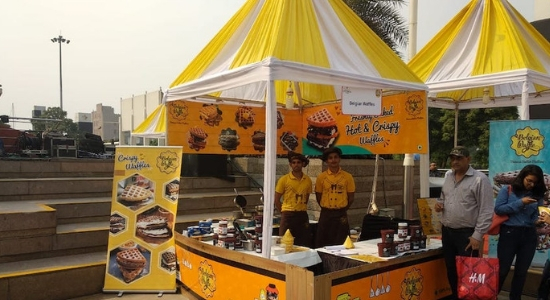
The traditional Indian cuisine will never be done away with at weddings. The backbone of food will always be Indian to cater to the majority of the guests and provide the traditional element. However, there are many unique flavours and cuisines that add to the overall exoticness of the spread. Chefs from the particular regions in India fly down to national and foreign destinations just to make justice with the Indianness in the food.
Also Read: The New Age ‘Catering Cool’
Exposure to Global Brands
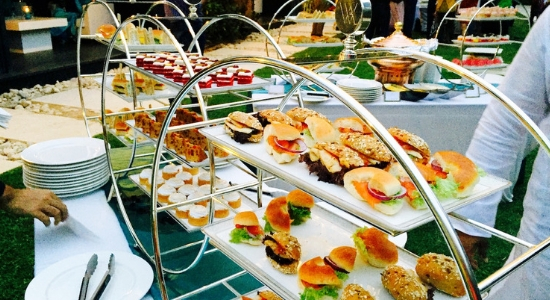
The common non-Indian cuisines that are represented through the functions are typical Asian, Middle-Eastern, Mexican, Italian and more. The innovation within these cuisines is unique. Niche cuisines such as cocktail idlis, mini dosa stuffed with halloumi cheese, caviar crackers, lobster rolls, gulab jamun trifle, taco chaat with a fusion make the food interesting. Various cuisines are served at exotic counters - oyster bars, truffle bars, DIY counters.
International food brands are also gaining ground - names like Hakkasan, Zuma sometime make a prominent appearance at Indian weddings.
Designing Avant-garde Menu

Artisanal cheese like Burrata from Puglia, Truffle and Mushroom bars, Black radish have also made their way into high-profile weddings. Guests who come to these weddings are now better travelled, exposed to a variety of exotic world cuisine, and have developed much more evolved palettes. This makes it imperative to design an avant-garde and well thought-out menu.
Must Read: Capturing The Catering Market Will Let Your Restaurant Business Flourish
Adding Street Food Flavours
An Indian wedding wouldn’t be complete without street foods! For Mumbaiyya wedding, a Vada Pav stall is a must; similarly, a chat counter is must if the destination is in Delhi. Families focus on highlighting their cultural and regional heritage with wedding themes.
Elements of Authenticity are a Must

That’s why people prefer to bring the best chefs from the particular region. Even if the wedding is being held abroad, say at Lake Como, Italy, the hosts want to delight their guests with a set-up of Indian foods, such as ‘Chaatwala scenes’ from Delhi, assorted variety of Muthuswamy’s South Indian spread, Kolkata’s famous street food ‘Jhalmuri’, the “PanwalaBhaiya” of Banaras and a lot more. The catering companies must successfully execute the destination weddings - put the setups in order but give them your own twist, rather Indian. Keep it simple and budget-friendly by using the local materials available at the destination or the city.
Advice to Catering Companies in India
Every catering company, these days, has an array of gastronomical delight to offer - niche cuisines in the house, international cuisines, food styling, concept brunches, molecular gastronomy and much more. However, Indian Regional Meal is something that is imperative to any Indian Wedding. It is a reflection of the culture of the families that gives them a sense of belonging, so it is essential that a catering company must have expertise in authentic Indian cooking. Whether it is the tasty samosas or whipping up some amazing jalebi and rabri – Indian regional cuisine is a must have on the menu and is always a crowd pleaser.
About Author
Alisha Shirodkar Aggarwal is VP Business Development at Tamarind Global. Started in the year 2006, Tamarind Global began as an inbound destination management company. In the span of 10 years, this award-winning company, now, has four distinct verticals (tours, weddings, events, and corporate services) and a growth rate of over 400%.

Catering industry in India has taken a new phase and is growing at a fast pace. Caterers who are creative and are staying current are definitely more profitable than any other businesses. The caterers these days are also need to be certain about what they are offering to their customers are not "Catering Outdate” as people are much more adventurous and knowledgeable about what they eat and what is being served.
Evolution of the Catering Industry
“I came back and started Caara 5 years back. We used to go to client saying that we are doing fresh, chemical free products. They were not bothered whether it was farm fresh and were looking for the typical menu. Today it has taken a 360 degree turn where our clients are so aware about the source of the produce, they love the way the vegetables, salad leaves are picked that morning and brought to their homes to cook in the evening for the event,” shares Ambica Seth, ED, Caara who believes that in today’s environment intolerance, allergies to food have to be taken care as regular SOPs in the business.
People are much more concerned about the ingredients and their selection when looking out for a caterer and their source. Health has become a centre stage for diners who are much more aware about the benefits of local sustainable produce.
“Hygiene has become an important aspect in the restaurant’s menu today. Catering has changed from standard menus to wider menus, health aspect has been taken care of, and people are willing to include global cuisine in the menu. Also, our chefs have become so adventurous with ingredients and presentations,” says Sameer Lamba, Owner, Kwals Group who is a 3rd-gen in the catering business and has catered to big events like Formula1 and IPL.
Overcoming Challenges
Across India, kitchen is the last thing on anybody’s mind. And, this is outdoor’s catering biggest pain because even if you are catering at someone’s house the kitchen has been put somewhere which is inaccessible and you are struggling. It is on nobody’s mind how it should come out and how hygiene is an important factor. In the past years the trends have changed. You can see base kitchen being setup. “A lot has to change from corporate; Stadium and kitchen should be of the standard if we have to feed 10 thousand employees. Technology is coming inside the kitchen but we are still using decade old cooking method,” adds Lamba.
Also, food industry is one of the industries which have the highest attrition rate and getting the right manpower is still a challenge. “Skill development is the main challenge and the only pain in the business. You will see a lot of new talent and people from another businesses move in but there is no training to groom the right skill set,” points Sanjay sharma of Elior India that feeds around 80 thousand to 1 lac customers daily.
Commenting on the same, Seth adds, “You got to make sure that your service staff is aware about the menu and ingredients and they can address to customers when they are asked about it. People know about foods. They are adventurous, they try new things. They want to talk to chefs and discuss things.”

Catering as a segment refers to creating a special experience for clients/diners, wherein they visit a restaurant to relish specialties of a particular food concept in a pre-defined set ambience. Therefore, catering represents the art of bringing a unique food concept to the table. Today, caterers have become very experimental with the food choices that they promise to offer, coupled with innovative presentations that speak volume of their expertise in food business. On the other hand, restaurants offer a permanent aesthetics that cannot be customised.
Few years ago, restaurants used to be the trendsetters in dining concepts, driving the quality, consistency and swag quotients of cuisines. However, today, the situation has completely reversed. Now, catering industry is flourishing and defining trends, and driving the product and consistency factors.
Ankur Jain, Director, The Indian Catering Company said,” Earlier there used to no focus on the layout but now the clients gives equal importance to the setup layout & taste. With a lot of things changing in the catering business, challenges are ever increasing in the F& B industry.”
Hence, catering is adversely affecting the restaurant business. Following are the some of the reasons for this development:
Generating Higher Volumes:
In the catering industry, as you deal in larger volumes, the scope for financial gain increases. When you serve a large number of people, it yields higher margins. On the other hand, a restaurant is not equipped to generate high revenues due to restricted customers, menu and space.
Room for Variety:
A caterer delivers myriad choices and spends high to be able to churn high profitability, which in turn gives a free spending hand to him/her.
Trading on Revenues:
A restaurant generates lesser revenues on everyday basis under the same condition vis-a-vis a caterer. A caterer puts into constant efforts under different circumstances with every single event—from selecting a menu, choosing a set-up to handpicking ingredients and allocating manpower. It is a difficult task at each stage, but brings in an element of surprise as diners get the opportunity to see and explore something unique for the first time.
Upcoming Trends
The catering industry in India is worth INR 200 billion and the majority proportion of the business herein is unorganized. The business gives high returns, and hence becoming a very lucrative opportunity for today’s generation who want to delve in food business. Chefs are coming up with new strategies and concepts that are creating a buzz in the market with each occasion with the freedom to tweak a concept to serve to clients’ (read customers’) needs. This way they are able to explore more opportunities of showing their talent.
The latest trends in the catering market are that how you present you buffet and food. Nowadays, a restaurant with specialized cuisine is in high demand amongst clients. Fusion food is the preferred choice of younger generation and they always want to try new things in food.
Commenting on the same, Jain said,” We believe that we have to provide something new and different for each of our clients whether in terms of food or setting up the buffet.”
Hurdles on the Way
When a restaurant starts getting more and more popular, it’s natural for management to start thinking of options for expansion. For some it’s a food truck. For others, it’s a second brick-and-mortar location. But for many, it’s expanding their service to catering.
As every positive comes with a rider, the opportunities of making easy money in the catering industry come with some challenges, which are as follows:
- The competition has started mushrooming, and hence giving rise to buyers’ market.
- When the scope is with the buyer, he takes the liberty to reap maximum benefits from the seller, leaving less room for the latter to gain profits.
- The customer gets into details and the menu items keep adding up, with high demands for best quality food. This leads to the need for specialist chefs for each cuisine or even sub-cuisines, which increases the cost.
- The arrangement of a set-up is another big ticket. The investment that a caterer has to do in a fancy set-up is very high and is getting dearer with each passing day.
Each and every cuisine is handled with kids gloves and the buffet space is set up like a five-star specialty restaurant. In any luxury catering set-up, there are at least six international and four–six local cuisines or sub-cuisines.
Owing to customers’ demands, caterers are forced to get the best team members (right talents and hence the human resource expense is very high.
The difference between ‘good’ and ‘great’ has always been attention given to details in whatever you do. In catering business, attention becomes a priority—a necessity that cannot be ignored if you wish to succeed.

According to an analysis by apex industry body Associated Chambers of Commerce and Industry of India (ASSOCHAM), the quick service restaurants (QSR) sector in India is currently growing at a compounded annual growth rate (CAGR) of 25%, and is likely to touch the Rs 25,000-crore mark by 2020 from the current level of Rs 8,500.
By 2020 it is expected that 35% of India's population will be in urban areas by 2020 totaling to 52 crores compared to the current urban population of 34 crores.
Thus the business unfolds endless opportunities for the budding restaurateurs and entrepreneurs, who want to make their mark in the restaurant business.
Here are a few business ideas, which can be explored in restaurant industry:
Café:
According to a report by Technopak Advisors, a consultancy firm, the per organised café market in India, which grew almost six fold in the last five years to $230 million currently, is likely to hit $410 million by 2017, maintaining a compounded annual growth rate of 13-14 per cent.
This makes cafés as one of the most sought after business ideas as well as making business in the country.
Food truck:
This is new culture adapted from the west, which is finding its way into the mainland India. India has witnessed small scale hawkers and food push carts, in which hygiene and safety of food is the matter of question.
Introduction of food trucks in India will provide variety as well hygiene out of mind, while savoring the lip smacking food items. Plus the benefit of food truck is that it is not stagnant, thus getting customers is easy.
Cooking classes:
The number of cookery reality shows has encouraged half the population of the country to be a cook and try different cuisine fusions and be a master chef.
One can grab the opportunity and open a cooking class for women in society or for children, who aspire to be chefs in future.
Spread your knowledge and earn money as well as praises, with low investments.
Bakery:
Bakery products have become the important meal of the day. The varieties of breads available and celebrations for occasions have made this business reach heights.
One can open a bakery with low investment and the demand is always high, which makes this business small yet profitable.
If one is an expert in cake baking, then theme based cakes are so in and the market will work in their favor.
Catering services:
This service is popular in food business as people approach for every small and big occasion and gets together.
Other than this people hopping from city to city for their demanding jobs, crave for home made food, where catering services come into play, especially the ones, who supply in hostels or P.G.s or the office canteens.
If one ties up with offices and event planners, I am sure this small investment business will take gigantic shape in future.
Opportunities never knock twice, so open the door when it is still knocking. Grab the opportunity and be a part of restaurant business.

Sameer is a third generation Hospitality Entrepreneur of the Kwality Group (pioneers in North Indian Cuisine restaurants, outdoor catering and organized ice cream manufacturing in India). Though, he holds an MBA in HR from Punjab University, he chose to stay with the Family Business. Despite being busy managing Restaurants and Catering, his passion for good food has made in bring to India a bouquet of American restaurant brands like IHOP, Potbelly etc. Sameer a quintessential Indian at heart, is currently working on his favorite projects affordable meal prepared in extremely hygienic conditions and set up backend facility for standardized mass production for Indian food in B2B format. Besides these, he is rapidly acquiring food courts in Malls by all leading builders in PAN India as operation and maintenance operator, having association with leading developers and QSR Brands.
What is experience according to you and how do you bring it to your business?
Experience is doing one thing over and over again and becoming perfect at it. We are building experience since generations. Now, we are mastering this art by getting perfect clients. We create perfection in terms of functions, cooking, presentation etc and setting a benchmark.
Any new trend hitting restaurant business?
Smaller menu and innovation in food is the new trend hitting food service sector. Global cuisine is also gaining attention these days. People today are much more aware about eating American food. There is much more knowledge about American food amongst the diners. There is lesser need of customization today than it was earlier. Anybody coming to an American restaurant is there to eat American thing.
How do you blend creativity and innovation with food?
We create new dishes every now and then. Also, we keep innovating and experimenting with the cuisines by importing ingredients from abroad and mixing them with Indian cuisine to create new fusions. When it comes to creativity then not only food but every part around it should be creative like the display. First impression is the last impression and that is why displaying food in the best manner possible becomes the necessity for restaurants. A lot of material is available and can be made available to come up with new innovation every day.

Suresh Prabhu,Minister of Railways, has said that to provide freedom to passengers to select their meals from an array of choices including local cuisine, e-catering has been introduced in 108 trains on an experimental basis from January this year.
Food can be ordered through the IRCTC website at the time of booking of tickets. He said, the Railways is working to integrate the best food chains of the country into this project.
Depending on the response from the customers, the facility will be extended to cover more trains. It is also intended to set up Base Kitchens in specified Divisions to be run by highly credible agencies for serving quality food.
IRCTC has recently joined hands with with Jubilant Food Works, the parent company of Domino’s Pizza, on a trial basis, to deliver pizza across 12 stations.
The passengers can also send an SMS (“MEAL <PNR>” at 139). List of E-catering trains is available at website. The scheme is being extended to more and more trains.
Initially the services will be offered by Domino’s Pizza at twelve stations including, Agra Cantt. (AGC),Alwar, Jaipur, Ambala, Jalandhar Cantt, Mathura Junction, Muzzafar Nagar, New Delhi, Pathankot Cantt, VAPI, Bharuch and Vadodara.
IRCTC has already started e-catering services on a specific section (Delhi – Amritsar), on a trial basis, from 25th September 2014, in non-pantry car trains.
E-catering facility has been extended to 120 trains, and more number of trains is being added to the list every few days.
Presenting his first railway budget, Prabhu, brought a cheer to the common man by not announcing any increase in passenger fares.
He said in the parliament that Railways is introducing ‘Operation Five Minutes’ to ensure that a passenger travelling unreserved can purchase a ticket within five minutes.
Provision of modified ‘hot-buttons’, coin vending machines and ‘single destination teller’ windows will drastically reduce the transaction time.
For the differently-abled travellers, a special initiative is being launched whereby they can purchase concessional e-tickets after one-time registration. The Minister said, it is also proposed to work towards developing a multi-lingual e-ticketing portal. He said, the Railways will move towards crediting all refunds through the banking system.
Prabhu said, in Central Railway, Western Railway and Southern Railway suburban sections, a pilot project of issuing unreserved tickets on smart phones has already started. The Minister expressed hope that this facility will be extended progressively to all stations.
Automatic ticket vending machines with smart cards and currency options have also been installed at many stations.
It is proposed to proliferate this further and also to introduce debit card operated machines.
Introduction of integrated ticketing system on the lines of rail-cum-road tickets on Jammu – Srinagar route will be expanded.
In order to make travel on Indian Railways a happy experience, the Budget has given thrust on Cleanliness and proposes a new department for keeping stations and trains clean under Swachh Rail Swachh Bharat Abhiyan.
New toilets will be built at 650 additional stations; online booking of disposable bed rolls will be made available.
24X7 helpline number 138;toll-free number 182 for security related complaints have also been proposed in the budget.
Now, 200 more stations to come under Adarsh Station scheme; Wi - Fi to be provided at B category stations; facility of self-operated lockers will be available at stations.
Copyright © 2009 - 2025 Restaurant India.





